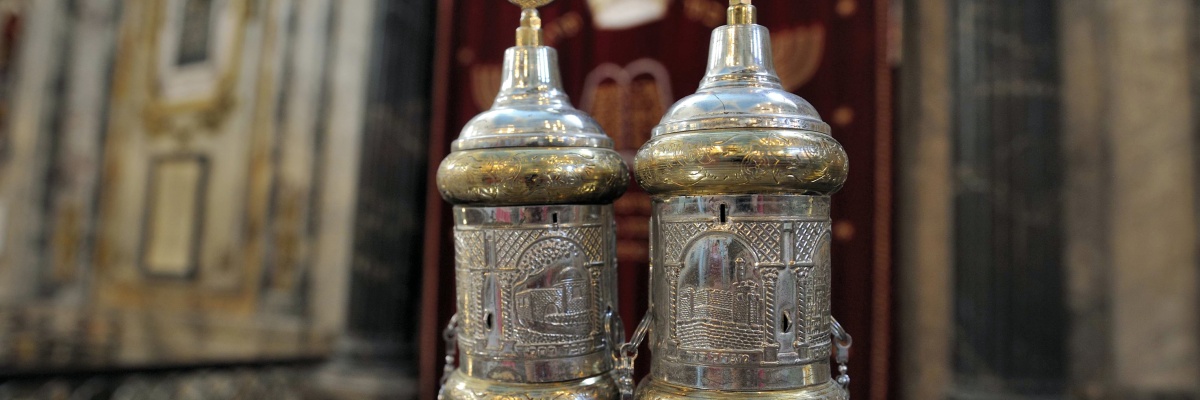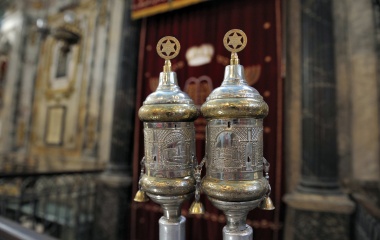
Provence, where Torah in Motion’s inaugural trip to France is centred, is situated in the south of France closer to Barcelona than it is to Paris. This is true – at least from a Jewish perspective – not just geographically, but culturally and intellectually also. Like their Spanish cousins – and unlike the great Sages in the North of France – the Jews of Provence believed in the importance of general studies – philosophy, science, literature and the like.
At the same time Provence produced some of the greatest Sages of the medieval period and by any measure is one of the most important centres of Jewish life in our long history. Its Sages include such luminaries[1] as the Raavad, and his chavruta, study partner, the Ba’al HaMaor, the Ralbag (known in non-Jewish circles as Gersonides), Kalonymos ben Kalonymos, Shmuel ibn Tibbon, the Radak, Rav Menacham HaMeiri and I look forward to discussing their and others’ historical significance in upcoming posts.
Like all great Jewish communities, Provence developed its own minhagim, customs, many which are observed world-wide today and others which have not gained such acceptance. The tenacity to which they adhered to their way of life is underscored by the Meiri’s authorship of Magen Avot, literally defence of the fathers, where he defended 24 practices of Provencal Jewry against the customs of Spanish Jewry.
Far and away the largest Jewish community in the medical period was in Spain. According to some historical estimates upwards of 90% of world Jewry lived in Spain in the 13th century. As persecution of the Jews increased and Spanish Jews began to emigrate to other communities this often created tensions with the existing communities. The Spanish exiles had their own customs and their sheer numbers threatened to upend local practices that had existed for hundreds of years. That is essentially what happened to the Romanite Jews of Greece, whose customs have been almost completely lost as the Spanish Jews took over the community. To a somewhat lesser extent the same happened to Moroccan Jewry.
Let us cite some of examples in Magen Avot. Spanish Jews would not wait to eat dairy after eating chicken but would wait a full six hours after eating meat, whereas the Provencal custom was to wait after chicken as if it were meat, but they would wait “five or six hours” understanding the custom of waiting not so much based on time but based on waiting from one meal to the next[2].
The Spanish custom was not to make havdallah when Tisha b’Av was on a Sunday whereas all follow the Provencal custom to do so.
Some of the customs of Provence which were not accepted outside of Provence, include the following. When davening maariv early in the summer they would not say kriat shema during maariv but after dark only. In Provence Avinu Malkeinu was said even if Rosh Hasahnah was on Shabbat; when Purim was on Sunday they would observe the fast of Ta’anit Esther on Friday; Provencal Jews said “Shalom Rav” even at Shacharit thus never saying Sim Shalom in the Amidah.
Torah in Motion’s journey through Jewish history began in Marseille, the largest city in Provence, where some 90,000 Jews live making it the city with the third largest Jewish population in Europe, with only Paris and London having larger Jewish populations.
While many associate France with anti-Semitism this is much less of an issue in the Marseille and the south of France. As was explained to us, many of residents of Marseille, Jewish and non, come from the former French colonies of Morocco, Tunisia and Algeria and are ‘old time Arabs’ who got along well with Jews. As everywhere else in the world there is room for improvement but Jews walk around proudly wearing their kippot. The Beit Din lists over 35 kosher eating establishments and there are more than 50 shuls – pretty much all of them traditional – in daily operation. There is little doubt that compared to the medieval period, conditions for the Jews are much better today.
Perhaps the most prominent Jewish family to have lived in Marseilles is the Ibn Tibbon family, most famous for their translations of many Arabic works – the language of the intelligentsia in the Middle Ages – into Hebrew giving many access to the great works of Greek philosophy, science and the Guide of the Perplexed of Maimonides. It was the translation of the Guide by Shmuel ibn Tibbon that inadvertently helped fuel the Maimonidean controversy[3] as his views – many of them radical – were now easily accessible. PG we will briefly discuss this controversy – which began in Provence – in our next post.
[1] I use this term not only figuratively. Rav Zerachiah Haelevi, is known in Jewish history as Ba’al Hamor , the master of light. Living in Lunel, French for the moon, he named his Talmudic commentary Hamaor, the light. On those relatively easy tractates he called his commentary Hamor HaKatan, the small light i.e the moon. For the more difficult tractates of Nezikin he called his commentary Hamaor HaGadol, as these passages required a much greater degree of illumination, the light of the sun.
[2] This is basis of the minhag some had to eat dairy on Shavuot even if the previous meat meal had been only 3 or 4 hours earlier. This is the simple understanding of Mar Ukva’s teaching which serves as the basis of the custom to wait. “I am, with regard to this matter, like vinegar, son of wine, with respect to Father. Father, if he were to eat meat at this time, would not eat cheese until tomorrow at this time. But as for me, only at this meal, do I not eat cheese; at a different meal I will eat cheese” (Chulin 105a).
[3] This translation also gave us the “famous” letter of the Rambam detailing his daily schedule. Ibn Tibbon wrote to the Rambam saying he wanted to come to Egypt so he could discuss his questions regarding the translation. The Rambam wrote back that he should save himself a trip as he would have no time to properly meet with him due to his inhumane schedule which he then details. A translation of the letter can be found here.

